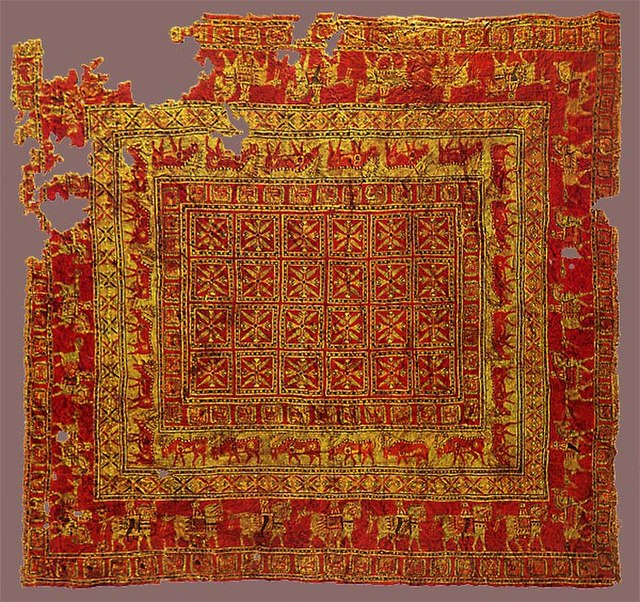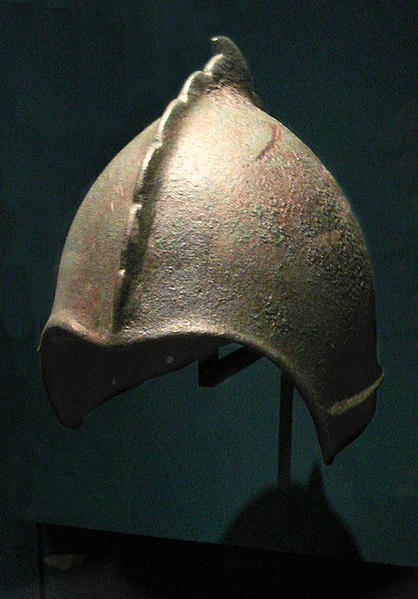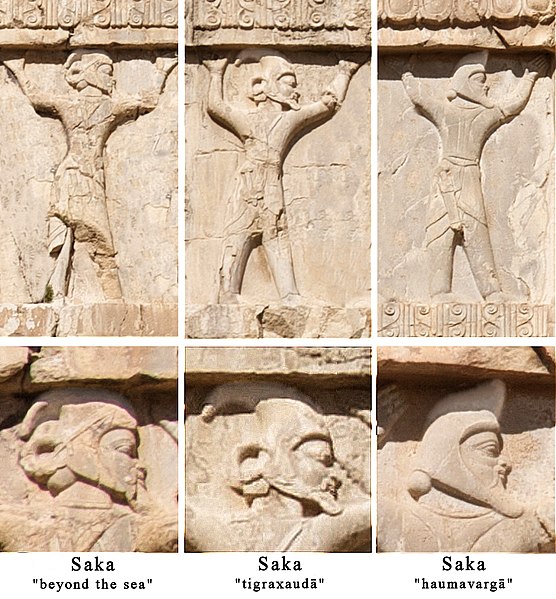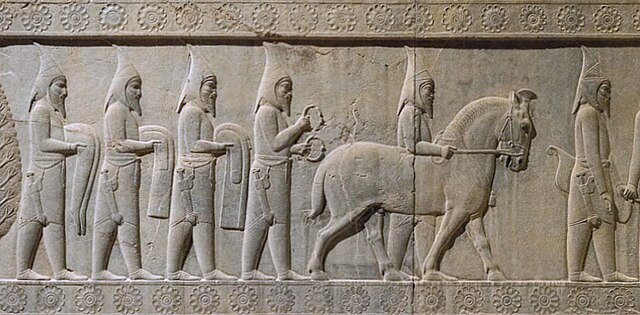The Pazyryk culture is a Saka nomadic Iron Age archaeological culture identified by excavated artifacts and mummified humans found in the Siberian permafrost, in the Altay Mountains, Kazakhstan and Mongolia. The mummies are buried in long barrows similar to the tomb mounds of Scythian culture in Ukraine. The type site are the Pazyryk burials of the Ukok Plateau.
Many artifacts and human remains have been found at this location, including the Siberian Ice Princess, indicating a flourishing culture at this location that benefited from the many trade routes and caravans of merchants passing through the area. The Pazyryk are considered to have had a war-like life. The Pazyryk culture was preceded by the "Arzhan culture".
Pazyryk Kurgan
Pazyryk carpet, manufactured in Central Asia or the Near-East.
Tatooes of the warrior excavated at Pazyryk, with zoomorphic symbols, 5th-4th century BCE.
Samruk (Griffin), burial mound of Tuekta (5th century BCE) Altay, Pazyryk culture.
The Saka were a group of nomadic Eastern Iranian peoples who historically inhabited the northern and eastern Eurasian Steppe and the Tarim Basin.
Cataphract-style parade armour of a Saka royal, also known as "The Golden Warrior", from the Issyk kurgan, a historical burial site near Almaty, Kazakhstan. Circa 400–200 BC.
Scythian helmet, copper alloy, Afrasiyab, Samarkand, 6th–1st century BC.
For the Achaemenids, there were three types of Sakas: the Sakā tayai paradraya ("beyond the sea", presumably between the Greeks and the Thracians on the Western side of the Black Sea), the Sakā Tigraxaudā (the Massagetae, "with pointed caps"), the Sakā haumavargā ("Hauma drinkers", furthest East). Soldiers of the Achaemenid army, Xerxes I tomb detail, circa 480 BC.
Sakā Tigraxaudā tribute bearers to the Achaemenid Empire, Apadana, Staircase 12.








